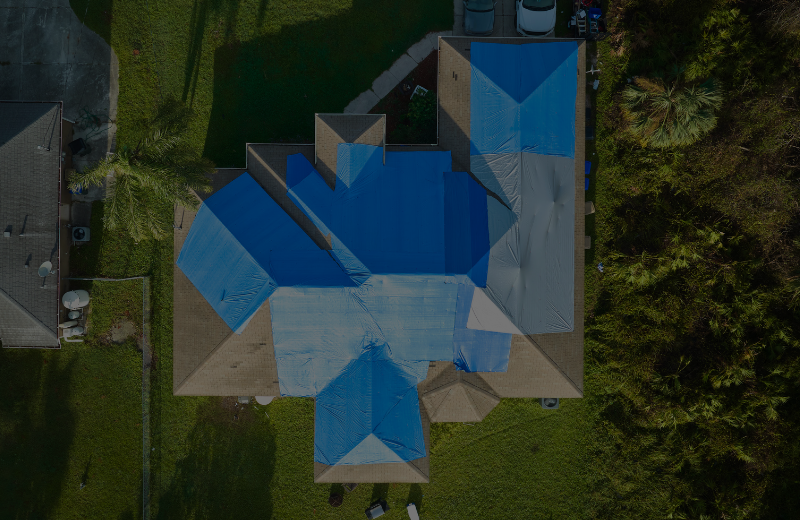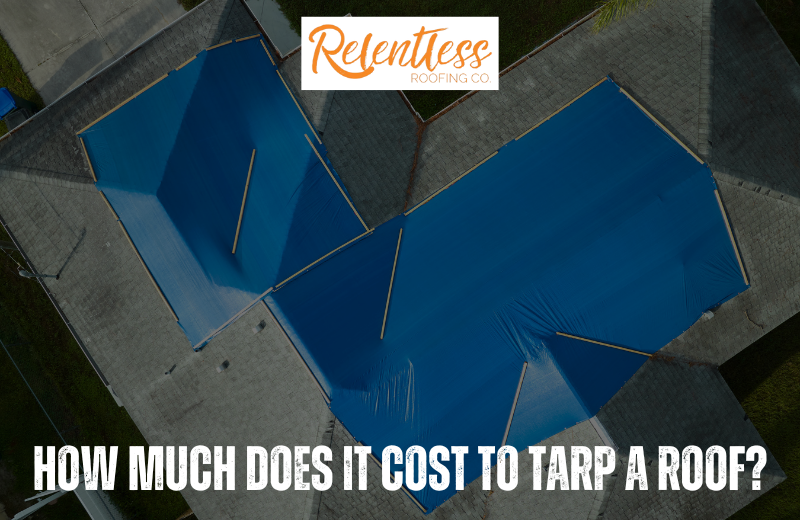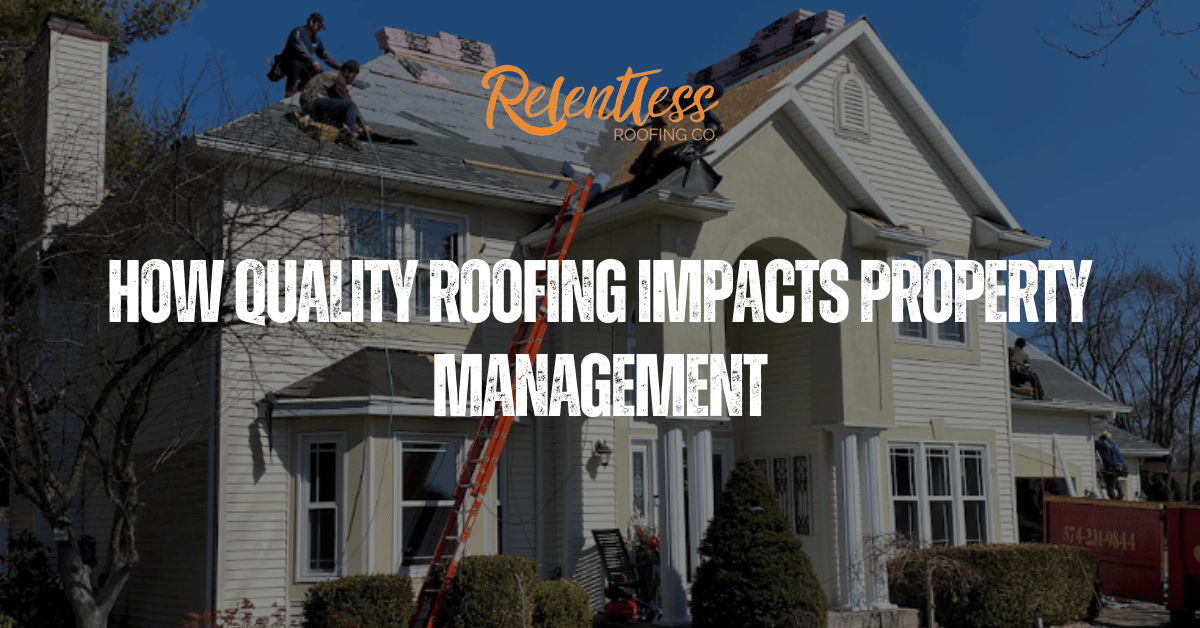Introduction
Roof tarping is an essential measure for protecting your home from further damage caused by storms, leaks, or structural issues. Whether as a temporary fix or an emergency response, tarping shields your roof from the elements and buys time for permanent repairs. But how much does it actually cost to tarp a roof? The answer depends on various factors, including the size of the roof, the materials used, and whether you opt for a professional or DIY approach.
Understanding the expenses involved, the materials used, and the factors influencing these costs is crucial for homeowners planning to secure their property effectively. This guide provides a detailed breakdown of roof tarping costs, offering clarity on pricing, labor, and material options to help you make informed decisions.
Why You Should Consider Tarping Your Roof?
Roof tarping is often necessary to address sudden damage caused by storms, fires, or other unexpected events. Here are the primary reasons to consider this temporary solution:
- Prevents Water Damage: A roof tarp acts as a temporary barrier, preventing water from seeping into damaged areas. It safeguards insulation, walls, and electrical systems, avoiding extensive water damage and costly repairs.
- Emergency Protection: In urgent situations, such as after storms or accidents, a tarp provides immediate coverage for exposed areas. This quick action minimizes risks of further deterioration until professional repairs can be completed.
- Cost-Effective Solution: Tarping your roof is an affordable way to stabilize damage and protect your home’s interior, saving on potentially expensive repairs caused by prolonged exposure to the elements.
- Weather Shield: A properly secured tarp shields your roof from additional damage due to rain, wind, hail, or debris, providing a layer of security while awaiting permanent solutions.
- Peace of Mind: Tarping ensures your home remains safe and secure, giving you time to plan, arrange for inspections, and seek professional repairs without undue stress.
Taking prompt action to tarp your roof after damage can prevent complications, reduce repair costs, and provide essential protection for your home.
How Much Does It Cost to Tarp a Roof: Everything You Need to Know
Tarping a roof is often a necessary emergency measure to protect your home from further damage due to leaks, storms, or structural issues. Whether you need a temporary fix before permanent repairs or immediate protection after a disaster, understanding the costs involved can help you plan better. Here’s a detailed breakdown of the expenses associated with tarping a roof, including material costs, labor fees, and standard versus emergency services.
Average Cost of Roof Tarping
Material Costs for Roof Tarping
| Tarp Material | Cost Per Square Foot | Description |
|---|---|---|
|
Polyethylene Tarp |
$0.10–$0.30 |
Lightweight, affordable, ideal for short-term use. |
|
Reinforced Polyethylene |
$0.20–$0.50 |
Durable, weather-resistant, suitable for longer periods. |
|
Vinyl-Coated Tarp |
$0.50–$1.00 |
Heavy-duty, excellent for extreme weather conditions. |
|
Fire-Retardant Tarp |
$0.75–$1.50 |
Designed for fire-prone areas, offers enhanced safety. |
Using a high-quality tarp, such as vinyl-coated or fire-retardant options, ensures better protection but comes at a higher price. The choice of material should depend on the extent of damage and the expected duration of use.
Labor Costs
Labor costs for roof tarping can vary significantly depending on factors such as the complexity of the job, the accessibility of the roof, and the urgency of the situation. For standard tarping services, hiring professionals typically costs between $30 to $80 per hour or approximately $0.70 to $2.00 per square foot, depending on the region and scope of work.
However, in emergency situations, where immediate action is required after events like storms or significant roof damage, the costs tend to increase. Emergency tarping services may range from $1.00 to $2.80 per square foot and often include an additional call-out fee of $100 to $200 for after-hours service.
These labor costs usually cover essential tasks such as setup, securing the tarp effectively, and implementing safety measures to ensure the process is completed correctly and safely.
Standard vs. Emergency Tarping Costs
The urgency of the situation plays a significant role in determining the cost of roof tarping services. Standard tarping, which is typically scheduled during regular business hours, generally includes routine labor rates and costs between $200 to $700 for smaller jobs.
On the other hand, emergency tarping services, often required during storms or other urgent scenarios, are priced higher due to the immediate response and additional labor demands. Emergency tarping can range from $500 to $1,500 or more, depending on factors such as the scale of the job, the time of day, and the complexity of the roof.
These services often involve premium labor charges and expedited service to address critical damage and prevent further issues.
Example Calculation for Roof Tarping Costs
To better understand the costs, let’s calculate an example:
Roof Size: 1,500 square feet
Material: Reinforced polyethylene tarp at $0.35 per square foot
Labor: $50 per hour for 5 hours
Emergency Service Fee: $150
Cost Breakdown
Material Cost: 1,500 sq. ft. × $0.35 = $525
Labor Cost: 5 hours × $50 = $250
Emergency Fee: $150
Total Cost: $525 (material) + $250 (labor) + $150 (emergency fee) = $925
This example demonstrates how costs can add up based on the size of the roof, type of material, and urgency of the service.
You may also read: How much does a roof rejuvenation cost?

Key Factors Influencing the Cost of Roof Tarping
Size of the Roof
Larger roofs require more tarp material and additional labor, which naturally increases the overall cost. For example, a small repair might only need a single tarp, while a larger area could require multiple tarps and reinforcement to ensure full coverage. Additionally, larger roofs may take longer to secure, further adding to labor expenses.
Material Type
The type of tarp material significantly affects the cost. High-quality tarps like reinforced polyethylene or fire-retardant tarps cost more but offer superior durability and protection. These materials are ideal for long-term use or in areas prone to harsh weather. On the other hand, budget-friendly options like standard poly tarps are suitable for short-term solutions but may require frequent replacements.
Roof Complexity
The complexity of your roof’s design can drive up costs. Steep or multi-story roofs are harder to access and often require additional safety measures, such as harnesses and scaffolding. Complex roof designs with multiple angles, valleys, or dormers may also require customized tarp applications, increasing both time and expense.
Labor Charges
Hiring a professional roofing contractor ensures the tarp is installed securely and safely, but it comes at a cost. Labor charges vary depending on local rates and the urgency of the job. Emergency tarping services, often needed after storms, typically incur premium fees due to expedited scheduling and labor-intensive processes.
Extent of Damage
The severity of the damage plays a crucial role in determining costs. Small leaks may only require a single layer of tarp, while more extensive damage might necessitate reinforced layers or additional fasteners for security. Severe damage may also demand more labor and materials to stabilize the affected areas effectively.
Location
Geographic location influences the cost of both labor and materials. In urban areas, labor rates are often higher, while rural areas may have limited access to affordable materials. Additionally, certain regions with frequent storms or natural disasters may experience higher demand for tarping services, driving up prices.
Weather Conditions
Tarping during bad weather, such as heavy rain or high winds, can increase costs. Contractors may need to employ additional precautions, like using weighted objects to secure the tarp or working in less-than-ideal conditions. Expedited services during extreme weather often come with higher price tags to compensate for the added risks and challenges.
By understanding these factors, homeowners can better plan their roof tarping projects and make cost-effective decisions that ensure the safety and longevity of their property.
How to Save Money on Roof Tarping Costs?
Homeowners can implement several strategies to minimize roof tarping costs without compromising on effectiveness.
- Compare Estimates: Contact multiple roofing professionals to obtain detailed quotes. Comparing prices and services allows you to identify the best value, ensuring you don’t overpay for similar services. This can be particularly helpful when budgeting for standard roof tarping services.
- DIY Small Repairs: If the damage is minor and the roof is accessible, consider installing a tarp yourself. With the right safety gear, such as non-slip boots, a harness, and gloves, along with following proper guidelines, you can save significantly on labor costs. However, ensure the job is done securely to avoid further damage.
- Choose Standard Services: Opt for non-emergency roof tarping during regular business hours whenever possible. Emergency roof tarping services typically come with premium fees due to their expedited nature. Planning ahead can help avoid these extra charges and make the process more cost-effective.
- Invest in High-Quality Materials: While high-quality tarps, such as vinyl-coated or fire-retardant options, may have a higher upfront cost, they provide greater durability and weather resistance. This reduces the likelihood of needing frequent replacements, ultimately saving money in the long run.
By adopting these cost-saving strategies, homeowners can effectively manage their temporary roof protection expenses while still ensuring their property remains safeguarded against further damage.
DIY Roof Tarping vs. Hiring a Pro
DIY Roof Tarping
A DIY solution typically costs between $50 and $200 for materials, making it budget-friendly for minor roof damage. However, this approach carries risks. Inexperienced homeowners may not secure the tarp effectively, potentially leaving the roof vulnerable to additional damage. Safety is also a concern, as working on a roof without proper equipment can lead to accidents. DIY tarping works best for minor issues on accessible roofs where the homeowner feels confident in their abilities.
Professional Roof Tarping
Professional tarping services usually cost between $300 and $1,000, depending on the roof’s size, design, and damage. While this option involves higher upfront expenses, it ensures proper installation and reliable protection. Professionals are equipped to handle emergencies, complex roof designs, and severe damage safely and effectively.
Ultimately, the choice between DIY and professional tarping depends on the extent of the damage, budget constraints, and the homeowner’s comfort level with handling roofing tasks. For significant damage or urgent situations, professional tarping is often the safer and more effective solution.
Frequently Asked Questions
What is the average cost to tarp a roof?
A: The average cost to tarp a roof typically ranges from $175 to $700, with pricing often determined on a per-square-foot basis. Professionals generally charge between $0.70 and $2.00 per square foot, depending on factors such as the roof’s size, complexity, and whether the service requires emergency response.
Will a tarp help a leaky roof?
A: Yes, a tarp can temporarily protect a leaky roof by preventing further water damage and shielding the interior. Properly securing the tarp is essential for effective coverage, and professional installation is recommended for severe leaks.
What to do when a roof leaks in rain?
A: When your roof leaks in rain, place buckets to catch water, protect valuables with tarps, and identify the leak’s source if safe to do so. Apply a temporary fix like a tarp and contact a professional roofer for permanent repairs.
How long can you leave a tarp on a roof?
A: Tarps are temporary solutions and can last from a few weeks to several months, depending on the material and weather conditions. They should be replaced or removed once permanent repairs are completed.
What is the difference between standard and emergency roof tarping?
A: Standard roof tarping is a planned service used for non-urgent situations, often costing less due to flexible scheduling and routine labor requirements. In contrast, emergency roof tarping is performed immediately after severe damage, incurring higher costs due to expedited response and specialized labor needs.
Conclusion
Tarping a roof is a practical, cost-effective measure to safeguard your home from further damage during emergencies. By understanding the costs, materials, and factors involved, you can make informed decisions to suit your budget and needs. Whether opting for a DIY approach or professional service, prioritizing quality materials and proper installation ensures optimal protection.
At Relentless Roofing Co., we specialize in comprehensive roof inspections, repairs, and replacements to keep your home protected against the elements year-round. Whether you’re dealing with storm damage, leaks, or wear and tear, our experienced team is here to provide prompt and reliable solutions for your roof. Call us today at 574-218-0642 or visit our website to learn more about our services or schedule your free consultation.



